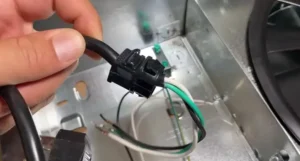We have all been in a science class back in the day. Where we would learn when each element in the periodic table melts, boils, or evaporate. Also, how much electrical flow is too much for a device and how it might cause destruction.
That is why there is a fuse in every single electrical appliance. A fuse works as a circuit breaker and a medium to flow electricity to the device from its source. If at any given time the flow is too much, the fuse melts and breaks the circuit. Saving both the device and our lives.
But what is the correct fuse for the cooker hood, that is the question. Well, normally a cooker hood fuse ranges from 3-5 amps. But it can go up to 10 amps depending on the model, size, and manufacturer.
Let’s look into detail about what is correct and incorrect in the world of a range hood or cooker hood fuse.

The Correct Fuse Amp for Your Cooker Hood | Rights and Wrongs

As we mentioned earlier, fuse amps can go around from 3 amps all the way up to 10 amps. This doesn’t mean that you can just put any one of them in your cooker hood.
You need the exact fuse amp to ensure not only your range hood works properly but also to ensure its safety as well as yours. Why? Fuses are made as a barrier. And like all things good, bad, and excessive can cause damage. Be it too much sugar, chili, or salt. Everything should be in order.
But as we don’t have control over electrical flow, the risk of getting our appliances damaged stays. And this is where the good old fuse comes in

It lets the exact amount of electricity flow to the circuits. And when the flow goes over the required amps, the thin wire inside the glass case fuse melts. Hence cutting the electricity and saving your cooker hood.
This is why it is essential you use the mentioned fuse amp in your hood range. Or you risk its damage.
Where Do I Find the Amp Rating of My Cooker Hood?
You will find the recommended amp for your fuse in the manuals. Sometimes it’s even mentioned behind or on the side of your cooker hood on a sticker.
There is no best practice for installing a higher amp fuse than the recommended one. It’s not like having extra chocolate or a glass of your favorite coffee that will benefit you. Be very cautious about it as it will cause serious damage to your range hood.
Pro Tips:
- Go for a better brand fuse rather than a generic inexpensive one.
- Never go over the recommended amps.
- Consult with your manufacturer if you cannot find the recommended amp of your cooker hood fuse.
- Always disconnect your main breaker when working with electrical devices. (Example: changing a fuse, installing a new switchboard.)
FAQs (Frequently Asked Questions and Answers)
How many amps does a cooker hood use?
A cooker hood normally uses 3 to 10 amps. It depends on the brand, model, and size. So make sure to check your instructions manual and never overload it with more amps.
What amp fuse should an extractor fan have?
An extractor fan should have a 3 amp fuse in general. It might change depending on the size of the motor, brand, and other elements. Check its body for any level about the amp before fitting it with a bigger size amp.
Why has my cooker hood fan stopped working?
If your cooker hood fan stopped working, it can be due to a dust or grease build-up, a damaged switch, damaged power cord. These are the common issues. In some extreme cases, the circuit board can also be damaged. Check the former problems and if it still persists, call a professional to check it inside out.
What voltage is a cooker hood?
A standard cooker hood is 120 volts. But depending on the region, you can also get 240-volt options. And you can always accommodate between 120V/240V if you wanted.
Conclusion
Fuses are made to keep your device and appliances safe. Your phone charger, power strip, washing machine, oven, and even air fryer have it. So don’t try to check out what might happen if you use over the recommended amps. It’s not an elementary science class, but rather real life. So be wise and safe. Peace!



